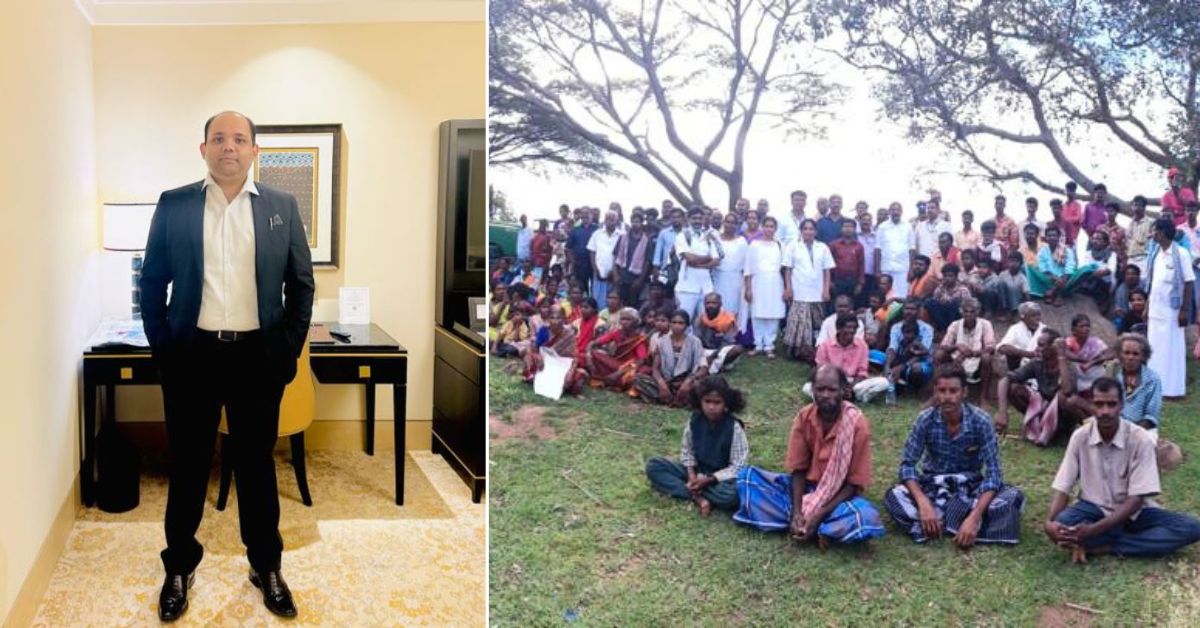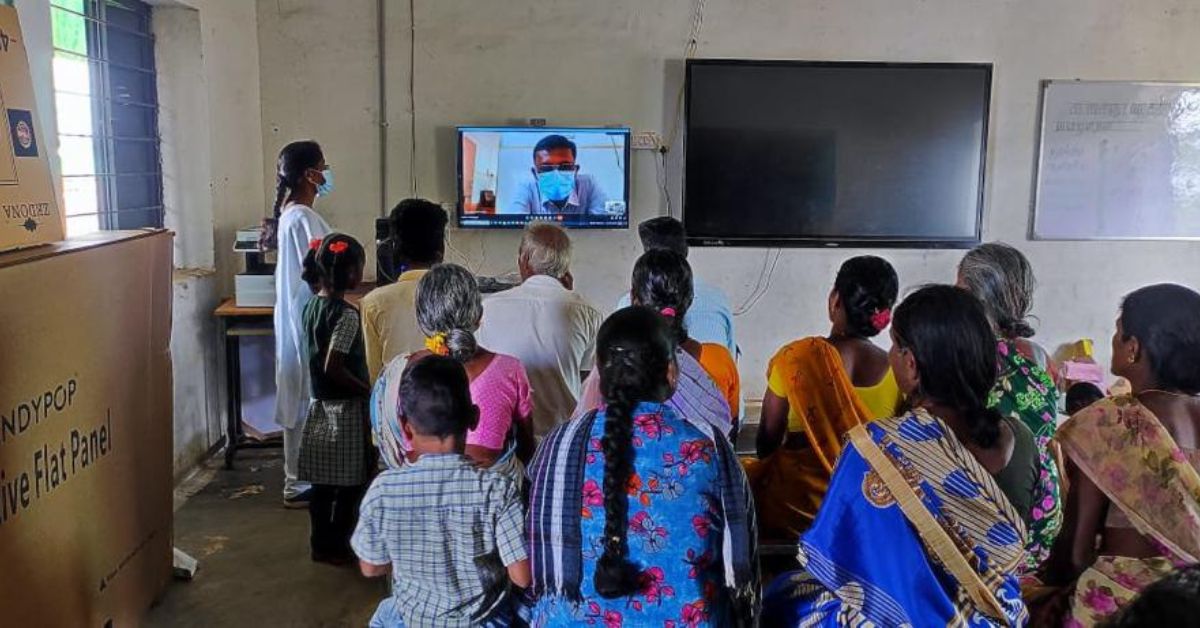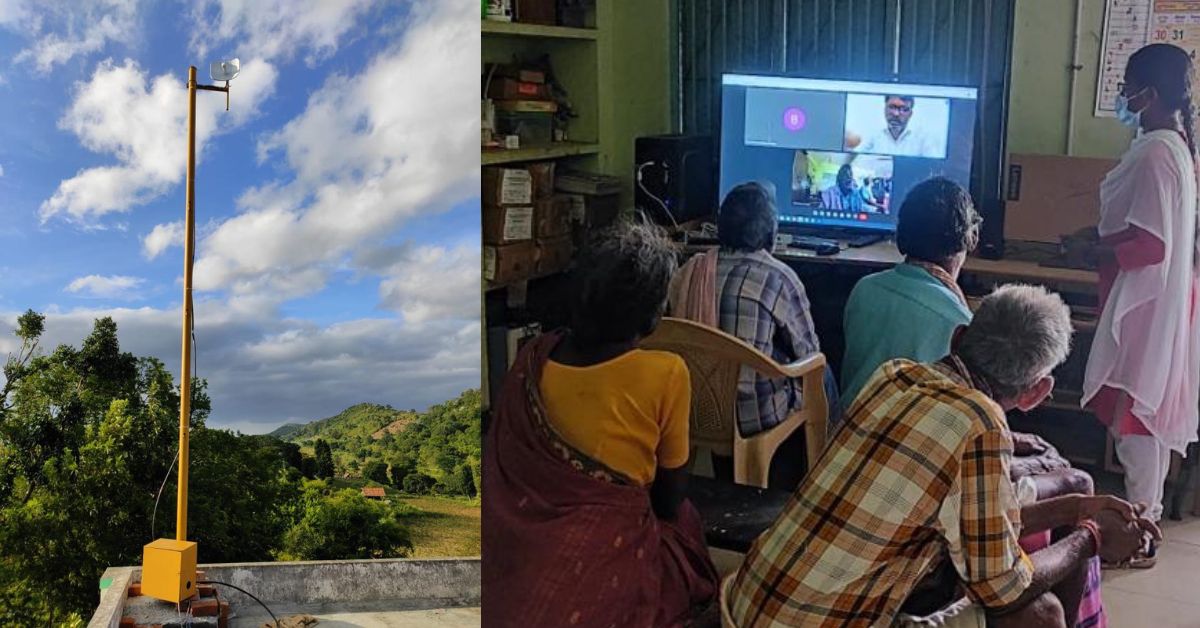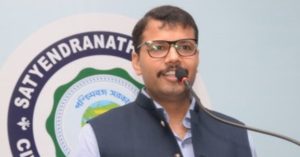How an IAS Officer Used a School To Bring The World to a Far-Flung Tribal Village
Setting an example for remote villages, IAS officer Krishnanunni H transformed the tribal hamlet of Kathirimalai in Tamil Nadu with a simple idea.

Nestled inside the Chennampatti forest range in the Erode district of Tamil Nadu, the Kathirimalai hamlet can be accessed only by traversing the rough terrain on foot.
Even today, the hamlet has no roads and about 400 residents in the tribal-populated village have been living without basic amenities, far from the luxuries of internet connectivity and modern technologies. For them, quality education and transportation during medical emergencies have been a major concern as the nearest primary healthcare centre is 40 km away.
Its plight reversed only when an IAS officer trekked the hilly terrain to meet the tribal residents.
The Better India sat down with Krishnanunni H, the IAS officer, and Kathrimalai residents to comprehend the issue closely and script their transformation journey.

When a remote village gets 5G
Originally from Kerala and a 2012-batch IAS officer, Krishnanunni H took charge as the district collector of Erode in 2021. It was during his regular visits to the remote parts of the district that he came across the difficulties faced by these tribal residents.
In a conversation with The Better India, he says, “When it comes to health and education, Tamil Nadu usually has one of the best systems in place. For example, Erode district in the state is well developed.”
He continues, “But remote pockets like Kathirimalai, which are located deep within the forest, are inaccessible given its geographically difficult terrain. Tribal residents have to trek for 3-4 hours one way to avail health services. This makes it difficult for them to avail of any other welfare services as well.”

Upon trekking back from the hamlet, the officer decided to respond to the villagers’ woes with an effective solution.
“We started looking for solutions once the problem was identified. We did not intend to establish a new brick-and-mortar structure there. We wanted to utilise the resources that were already available (such as solar power). After brainstorming for solutions, we decided to introduce technology and initiate a tele-facilitation service in the remote village,” he says.
In early 2022, Krishnanunni launched the ‘Punnagai’ (meaning smile in Tamil) project that connected Kathirimalai with a high-speed 5GHz Wi-Fi network to provide tele-medicine facilities and tele-education services to tribal residents.
The district administration roped in a team from Kerala-based Centre for Social Computing (C4S) to install a tower and set up the required hardware using solar power. Soon, the village had its WiFi network installed.
Connecting with the outside world
To get the programme rolling, the district administration established a tele-facilitation centre in a tribal school where residents are connected with medical officers and educational experts at the click of a button.

“Every week, a tele-health session is conducted for the public. Now instead of trekking down to the primary health centres, residents can come to the school and consult with the same medical officers,” says the IAS officer.
“Similarly, we focused on improving the overall learning outcomes for these children without compromising on the existing school curriculum. Children are connected to an educational expert who helps them improve their regular academics,” he adds.
As of now, 32 students from grades 1 to 8 are studying at the Government Tribal Residential Middle School on the hilltop. Over a video call, The Better India spoke to the enthusiastic students and one of the Tamil language teachers, Chandraseyer.
Explaining the functioning of the project, he says, “We organise these online classes from Monday to Friday between 10:30am to 3:30pm. Earlier, the students would be inactive and less interested in classes. They would not come to school regularly. But with these online classes, we observe excitement among students. When they talk to experts, they feel connected to the outside world.”

A win-win for all
Talking about the impact of the project, Krishnanunni says, “We periodically assess the improvement in learning outcomes of these children. Many children in the initial assessment had basic knowledge, but now their learning levels have improved. Other than this, the dropout rate has reduced from 50 percent to nil.”
“In terms of health, people are now able to consult with doctors for primary issues like common colds, skin diseases, and anaemia, in an easier and quicker way. Their health-seeking behaviour has also improved,” he adds.
As of now, dedicated centres have been established in schools across 25 villages including Kalvarai, Arepalayam, and Hongalavadi benefitting 5,000 students and a tribal population of 12,000.
Looking at the success of the project, the Tamil Nadu government has announced plans to replicate the project across the state, says Krishnanunni.

“Along with my regular duties, I took this project as a priority. If you can bring a positive change in the most difficult places, then it could become an example for other similar villages. The expansion is a testimony to the success of the Kathirimalai project. In fact, the government has sanctioned a budget of Rs 10 crore to roll this project,” he says with pride.
Moreover, the IAS officer also focused on building community ownership. “We engaged tribal communities by training them to coordinate with health experts and educational experts, use the computer, and organise tele-facilitation every day,” he says.
This is the reason that even after Krishnaunni left the district to work as joint secretary in the Department of Finance, Government of Tamil Nadu, the project is still running. “Any programme can be initiated but a system needs to be put in place for the project to survive,” he adds. If you found our stories insightful, informative, or even just enjoyable, we invite you to consider making a voluntary payment to support the work we do at The Better India. Your contribution helps us continue producing quality content that educates, inspires, and drives positive change. Choose one of the payment options below for your contribution- By paying for the stories you value, you directly contribute to sustaining our efforts focused on making a difference in the world. Together, let’s ensure that impactful stories continue to be told and shared, enriching lives and communities alike. Thank you for your support. Here are some frequently asked questions you might find helpful to know why you are contributing?

“As an IAS officer or district collector, you have a lot of regular functions to execute but some projects are closer to your heart. When you see them at cutting-edge levels and catering to the needs of marginalised communities, it gives you immense satisfaction. There is nothing better than that,” he says with a smile.
Edited by Padmashree Pande. All photos: Krishnanunni H
This story made me
-
97
-
121
-
89
-
167














